From research of what makes The Most Dangerous Dog: what to look out for, I have discovered that the media plays a huge role in determining what society believes is a dangerous dog. In this research, I have looked at several breeds that have been victimized by the media over time which create a stereotypical idea that a certain breed is dangerous.
The most dangerous dog breed is ‘the breed that is considered most dangerous at the time by society’. Driven by perceptions that are heavily influenced by sensationalist media reporting, projecting fear upon the breed.
Such Breeds that have received a bad reputation in the past of being labelled as the most dangerous dog breed, include:
- Bloodhounds
- Newfoundlands
- Mastiffs
- St Bernards
- German Shepherds
- Dobermans
- Rottweilers
- Pitbulls
The media sensationalism creates an ongoing stereotypical idea that a certain breed is considered dangerous which develops in the collective minds of society.
The bad reputation of a dog breed grows further when certain people are looking for an intimidating dog that people will fear. Such people, looking to intimidate, are less than ideal for looking after a dog which is often left neglected, or worse abused.
Eventually the neglected dog bites or attacks someone which the media reports the story in a sensationalist way, thus completing the cycle and then reinforcing the reputation. This cycle is demonstonted below:
- Breed receives negative media attention
- Negative attention attracts people who buy that certain breed to Intimidate others
- Such people neglect these dogs and often teach them bad behaviors
- The dog eventually bites or attacks someone
- The Media covers the story of the attack in a sensationalistic way, completing the cycle over again.
- The dog breed is overrepresented in popular media such as novels, films, and television to convey a story of a nemesis or antagonist which further fuels this cycle.
This media cycle was brought to my attention from reading the book The Pitbull Placebo. The publication by Karen Delise outlines through American history that several breeds stemming as far back as the late 1700s have been a part of this media cycle of hysteria.
Here is a list of breeds that were once feared which have had excessive exaggerated media coverage of dog attacks either real or fictional at some time in history.
Many breeds considered dangerous as a result of media attention through time include:
- 1790 – 1860 – Cuban / Siberian BloodHounds – now extinct
- 1850 – 1910 – Bloodhounds
- 1850 – 1910 – Newfoundlands, Mastiff, St Bernards
- 1900 – 1930 – German Shepherds
- 1945 – 1979 – Dobermans
- 1980 – 1990 – Rottweilers
- 1990 – 2020 – PitBull Terriers
- 2020 and beyond – Cane Corso?
Fictional narratives also use breed representation to instill fear in their audiences. This has been the case through novels, films, music videos, television, and even commercials.
Are Bloodhounds Dangerous?
From the late 1800s to the early decades of the 1900s, the Bloodhounds were considered the most dangerous dog breed, especially in America. The Breed was used to control, track and intimidate criminals and prisoners. This dog was depicted in many novels and even theatrical plays of the time and was represented as savages beasts.
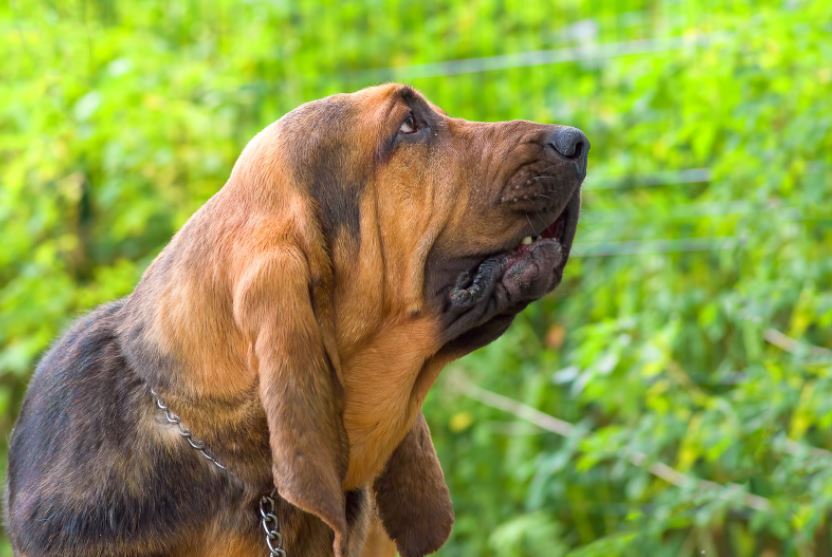
This installed fear was due to the anti-slavery novel Uncle Toms Cabin, by Harriet Stowe, which was published in 1852. This was the best-selling novel in the 19th Century and the second best-selling book after the Bible. It is arguably, some say, sparked the civil war movement in America.
The Moden Bloodhounds that we know today (originally from Britain and Belgium) were used as track and catch dogs by prison wardens and police authorities towards the end of the 1800s and early 1900s. This dog was used because of its tracking abilities, but also because ‘Bloodhound’ was its name.
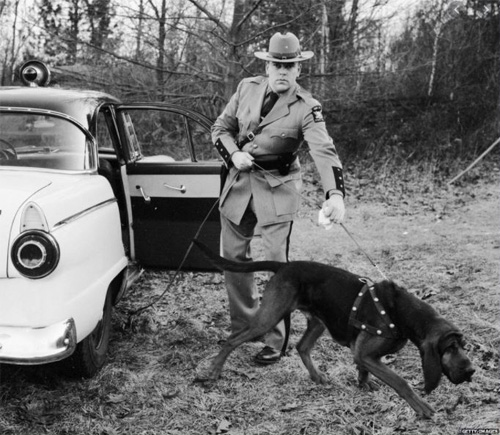
The word ‘Bloodhound’ was instilled in the collective mind of societies to be feared. This is because ‘Bloodhounds’ were used in the famous story of Uncle Toms Cabin only 50 years earlier. The best-selling fictional novel was a global success that spurred on theater shows across America and Europe.
The author, Harriet Stows’ depiction of slaves being attacked and attacked by bloodhounds was largely by dogs that resemble a Siberian Bloodhound and the Cuban Bloodhound which are now extinct and look nothing like the modern Bloodhound we know today.
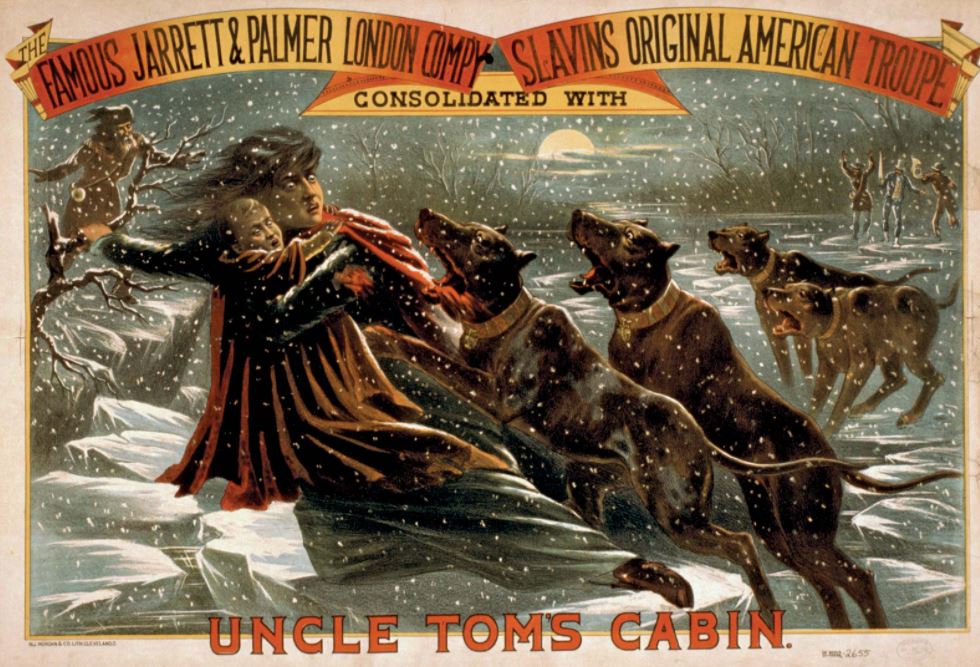
The Cuban Bloodhounds were used by the Americans (in the southern states), the French, the Spanish, and the British as ‘slave retrievers’, guard dogs, and war dogs in the late 1790s. Hundreds of puppies were being sold to these European nations from Cuba during this time.
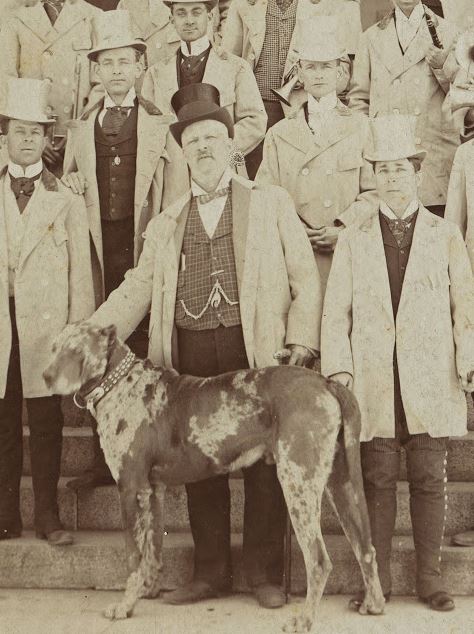
The many subsequent depictions of Uncle Toms Cabin such as theatre shows use the correct representation of Siberian and Cuban Bloodhounds as the menacing dogs in the story.
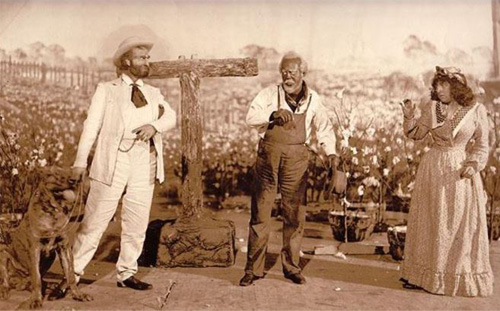
However, as the decades went on, the modern Bloodhound were starting to represent the ‘slave retrieves’ and confusion of labelling all Bloodhounds to be ferocious catch dogs was becoming accepted in society. This is shown in the film poster below in 1927 and the comic published in 1943 depicting modern bloodhounds and not Cuban Bloodhounds as previously been shown in the threatre.
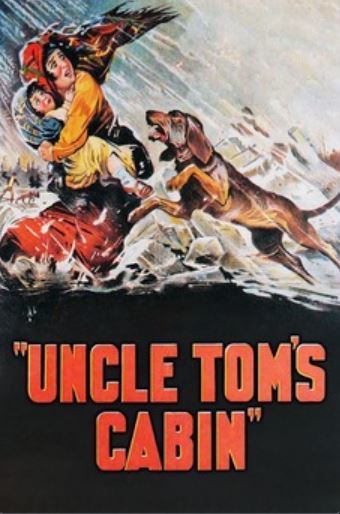
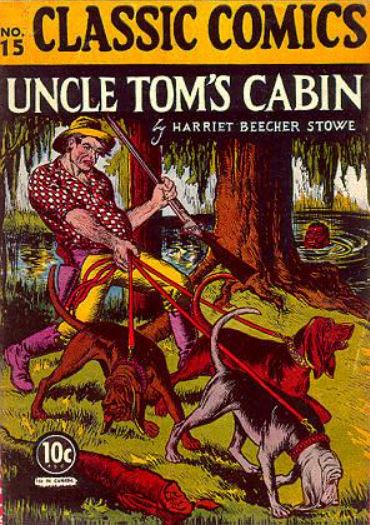
A fierce reputation was growing as modern Bloodhounds were being feared across the country. This was also attributed to the Cuban and Siberian Bloodhounds largely being extinct by the 1940s, having lost their purpose with the abolishment of slavery in the United States 75 years earlier.
Throughout the early part of the 20th Century, Modern Bloodhounds were the dog of choice for law enforcement and prison wardens that worked on the chain gangs across America and by the 1940s the Modern Bloodhounds had become the antagonist In Uncle Toms Cabin story.
The Bloodhound reputation had proved to be far worse than the dog’s actual aggression. In Delise’s research, she outlines a few media accounts that the tracking Bloodhounds would find the convict escapees and the dog would just bark excitedly and not attack.
Delise’s also points out that even the much feared Cuban Bloodhounds had some accounts that they are like any other dog and that the hype that had led to the fear of these dogs being so popular in the armies of American and European nations.
‘’As to their ferocity, it is all humbug, a child may fondle with them, they have been more grossly misrepresented than any set of animals in the world. The army not excepted.’’ this was a correspondent by the army in 1840 when the dogs arrived in Florida having been sent from Cuba to hunt Seminole Indians.
Are German Shepherds Dangerous?
Over the past 100 years, the rise of German Shepherd’s popularity has skyrocket which still remains high today according to the FCI Worldwide Figures from 26 countries. The high German Shepherd numbers result in higher German Shepherd dog attacks statistics as there are more chances for individuals of the breed to be neglected and abused, which possibly make those individual dogs dangerous.
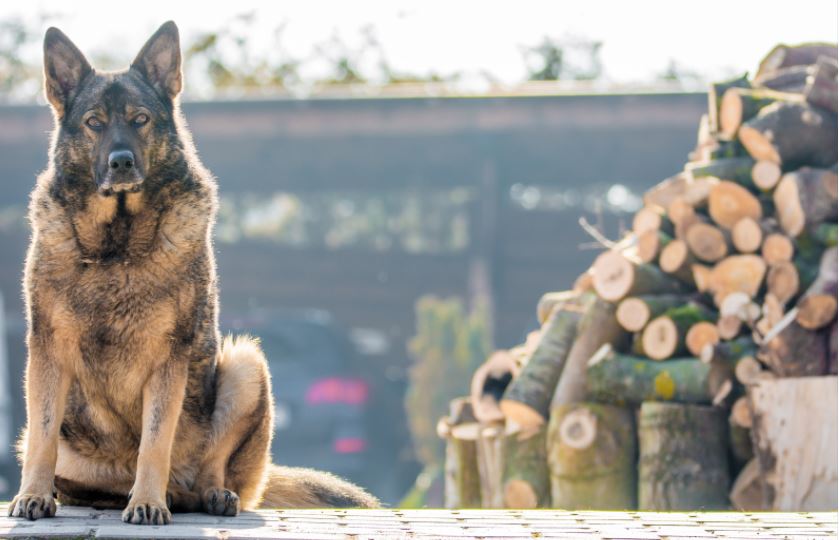
Before the 1900s, the German Shepherd Dog was just another farm dog used for herding. It wasn’t until Rin Tin Tin came along rescuing people and fighting off bad guys in 27 Hollywood Films from 1922 to 1931 that made the breed very popular.
The popularity of the breed skyrocketed which also proved to be a good police dog. The 1940s saw the TV Series ‘’The Adventures of Rin Tin Tin’’ which served as another surge in popularity of the German Shepherd.
Karen Delise outlines, that the rising increase of ownership of the German Shepherd resulted in more german shepherd dog attacks. This got to such a bad state, that in the media the New York Times described the breed as a ‘’treacherous deceitful vicious dog, certainly not to be trusted’’
In the Film industry, German Shepherds represented attacking wolves, police dogs, war dogs, and also a family pet. Apart from depicting wolves, German shepherds still act in these roles to the present day.
Since German Shepherds had both negative and positive roles in the media, the german shepherd remained a popular breed from 1920 to 1933 and again from 1950 to the present day.
Yet during these times with high dog attack statistics attributed to the breed, only resulted in moderate sensationalism, which often mentioned comments like an ‘a one-off occurrence’. It was clear that the positive depictions of the breed were dampening sensationalist emotions of stereotypical media reporting.
A high population of one breed results in more chances of this dog breed being represented in dog bite statistics. This is because the high numbers result in more chances for this breed to be neglected, abused and not trained or socialized.
Are Newfoundlands Dangerous?
During the beginning of the 20th Century, attacks by Newfoundland’s were being reported across Canada and the northern states of the USA. During this time Newfoundland’s were starting to be considered dangerous as they were being used to guard dogs.
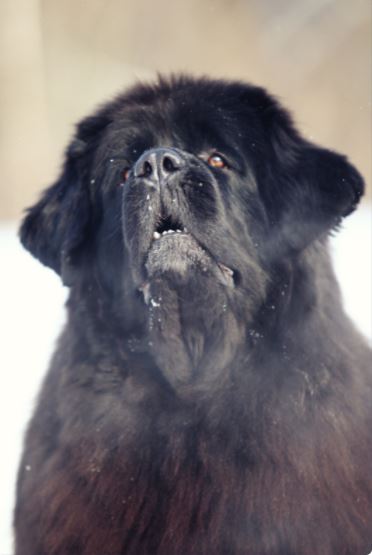
Newfoundlands originally used to haul fishing nets and pull carts in Canada became popular in the latter half of the 19th Century in colder climates. A mass increase in ownership occurred when several stories arose about the dogs rescuing people from drownings.
As the decades passed, these dogs started to perform a new purpose as guard dogs, often chained and not socialized, Newfoundland dog attacks rose at the end of the 19th century and early years of the 20th century. Mass increase of the breed and repurpose of these dogs being used as guard dogs led to the rise in attacks.
However, due to the positive associations, people had about the breed rescuing people, media outlets often blamed rabies for the crazed fatal attacks. However, due to the rise in attacks, some newspapers even remarked that the breed was more susceptible to carry rabies and that this was the source of all the Newfoundland attacks.
A dog that is taught to be a guard dog regardless of the breed, has the potential to be dangerous. Such dogs have not had socialisation well with people, animals or situations. The dog may be tied up all day and only let loose to run around the property at night. The dog’s mental state is diminished as they never been out to explore the world around them, like on a walk. They may even have also been taught to attack people.
Are Mastiffs Dangerous?
During the end of the of 19th Century, Mastiffs were considered dangerous, especially if they were guarding factories, warehouses in which they were often used throughout the world.
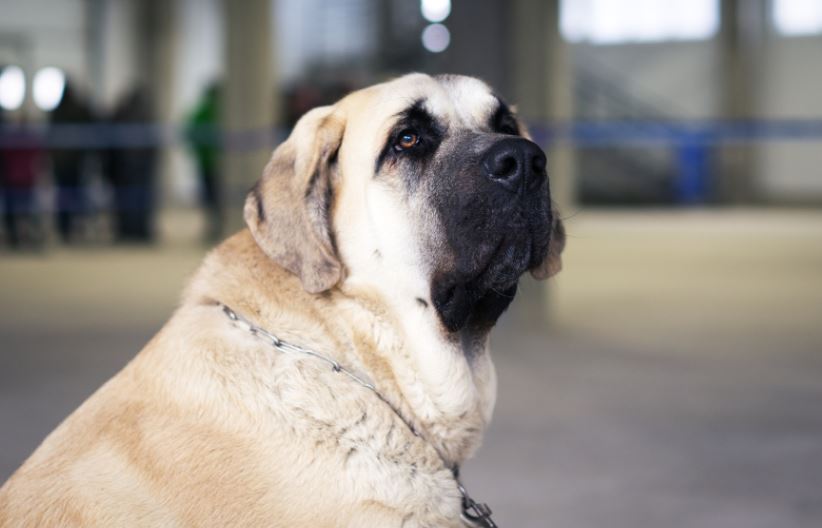
Mastiffs’ main purpose was primarily as guard dogs on large estates in the countryside, however, they found a new role in guarding large plots like factories in the cities. These dogs guarded businesses, factories, warehouses, and cellars.
Many reports of attacks by the breed are seen in newspaper articles in the late 19th century. However, by the turn of the 20th century, the popularity of other guard dog breeds replaced the mastiff, and reporting of these dogs attacking virtually disappeared from newspaper articles.
Many other breeds that during the height of their popularity attribute to a mass increase in dog attack incidents by that breed. This has been the case for such breeds like Airedale Terriers, Boston Terriers, and Collies being most popular from 1901 to the 1920s as Delise outlines.
Are St. Bernards Dangerous?
If you watch the movie Cujo you would certainly think that St Bernard’s are Dangerous. These dogs have been popular for a very long time from the 1800s to the mid of the 1950s. Due to their popularity there are many historical accounts of attacks attributed to the breed.
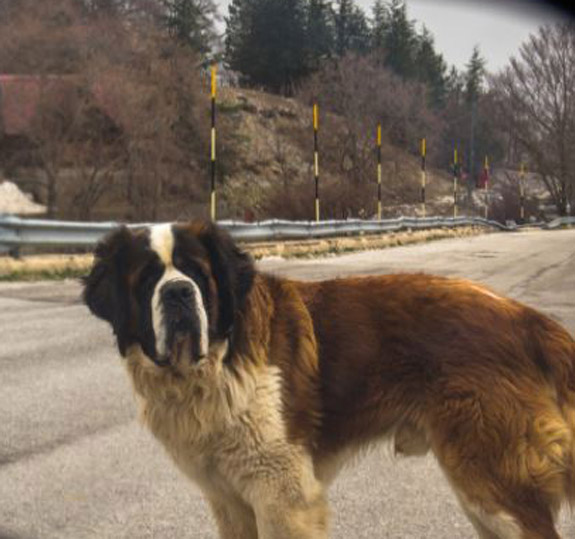
St Bernards had a huge increase in popularity from 1880 to which peaked in 1895 and started to fall in the early 1900s. Due to the population of this breed at the time, dog attacks rose and when the breed was no longer popular dog attacks of the breed diminished considerably. This was evident that dog bite stories resurfaced when the breed surged again in popularity in the 1920s and 1930s and then declined in the 1950s.
Stephen King’s 1981 Novel Cujo and the 1983 American horror film of the same name sure did make it seem like this breed was dangerous. It is clear, as with all breeds, that a huge spike in popularity of a breed results in some dogs that have not been looked after well, socialized, and even abused which lead to a spike in dog attacks.
Are Doberman Dangerous?
Dobermans Pinschers were being seen as a very dangerous breed in Society after WWII. This was driven by sensationalist media showing images of Dobermans being used by Nazis and an agender put forth by the media, that these dogs are inherently evil.
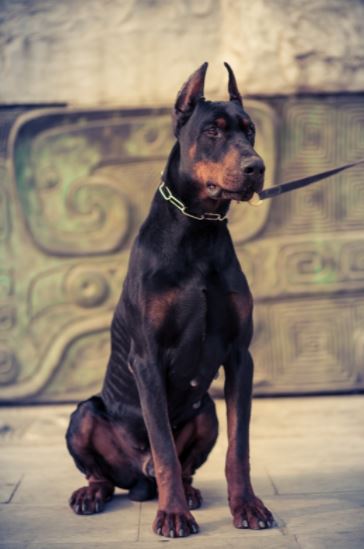
In America, before WW2, Dobermans were steadily becoming a popular watchdog and were starting to be used as home protection dogs. Karen Delise outlines, their intelligence was being noticed and was even used in a travelling carnival to do tricks by Willy Neckers Canine Carnival which used 5 Dobermans to dazzle audiences across America.
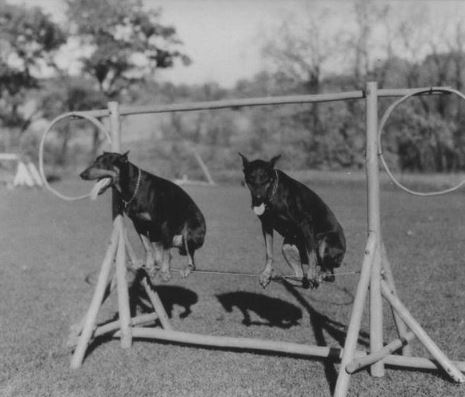
By the end of WW2, societies fear was fading in regards to Bloodhound and there were many examples of positive attributes of the German Shepherds being used as guide dogs, film and TV celebrities, police dogs, seeing-eye dogs, working farm dogs, and family companions.
Delise outlines, The media needed a new villain to sensationalize ‘’dog bites man’’ stories. Images of Nazi concentration camps depicted the use of Dobermans being used to guard and toucher people horrified the Western society. Dobermans from here on portrayed in the media for many years as Nazi killer dogs.
This demonizing of the breed wasn’t just unfair, it was contradictory to the American war effort at the time because Dobermans were used by US Marines and played a key role in America’s fight against the Japanese in the pacific.
There are hundreds of images of Nazis using other dog breeds, mostly German Shepherds and even Aldof Hitler himself publicly owned a German Shepherd.
Yet despite this, the media continued to latch onto Dobermans and portray them as vicious Nazi hounds. However, due to this reputation, dog attack statistics remained low yet the perception in the minds of society continued until the 1960s.
Delise points out, In the 1963s Birmingham Alabama, protest riots saw police brutality using German Shepherds Police Dogs on African Americans, most of which were children. This sparked outrage and shock across America and the world.
This event outlined that the positive reinforced perception of German Shepherds having a positive position in the minds of society, that the breed of dog could still be missed used negatively and made to attack children.
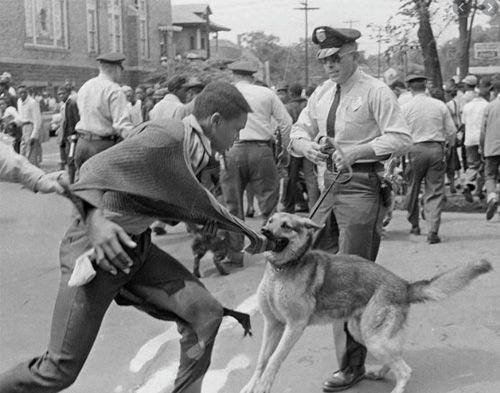
It was evident that the brutality came from the dog handlers and not the breed of the dog.
This historical event facilitated the thought, that the breed of dog is not at fault and that it is the handler controlling the dog, who is the actual perpetrator. The idea of the Dobermans as viscous unpredictable killer Nazi dogs was fading, as it was becoming clear that the danger was not the breed but their Nazi handlers.
The popularity of the Doberman rose during the 1960s and 1970s. As the crime was rising in America which finally peaked in the 1980s, people were looking for something that could protect them and their property.
The AKC reports that the Doberman became so popular in the 1970s that it was more popular than the golden retriever and was the second most popular dog in 1976 which peaked in 1980 and then quickly declined.
The explosion of Doberman ownership outlined in Delise research is also represented in Dobermans being used in films (shown in the graph in Red). Dobermans in films steeply rose in the 1960s with many roles as detectives, war dogs and police dogs. However, in the 1970s these dogs were used in thrillers and even a few horror films.
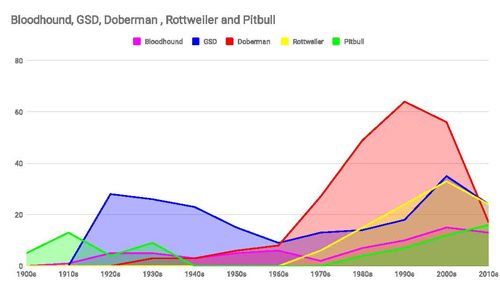
Unlike the leading dog roles of Rin Tin Tin by the German Shepherd and the Pitbulls in Arbuckle and Our Gang Little Rascal films before them. The Doberman had many more minor roles in films playing the guard dog of choice. This was often guarding the rich estate and featured in a lot of heist movies protecting valuable people, homes, or objects.
Films depicting Dobermans peaked in the 1990s and this is also the time when the ownership of Dobermans was already in a dramatic decline.
People were now looking for another breed of dog for protection and filmmakers were noticing the trend.
Are Rottweilers Dangerous?
Rottweilers were considered a very dangerous dog in the 1980s and 1990s and people were turning to this breed for protection as the crime was rising in America. The fear of the Rottweilers was driven by sensationalist media reporting of attacks and the film industry depicting this breed as monsters and super guard dogs.
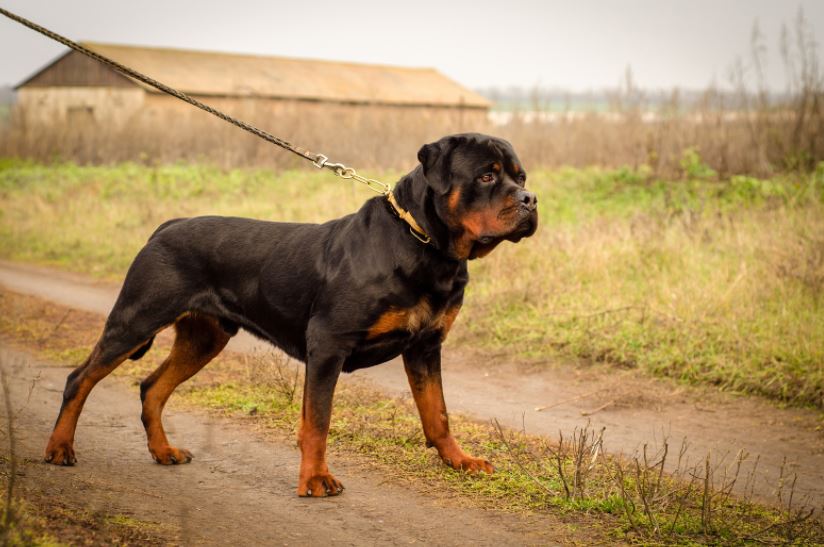
The popularity of Rottweilers was rising steadily from the 1960s and in the 1990s Rottweiler’s ownership was at an all-time high in 1993 and was the second most popular dog in the USA until 1997, falling third to the German shepherd. it remained in the top 10 breeds from 1987 to 1999.
In the 1990s people were seeking this breed and others like Pitbulls and during this time the population of Dobermans across America had dropped considerably.
Film roles Rottweilers were playing, were guard dogs and dogs used by Gangs. One role that the Rottweiler outperformed more than any other breed of dog was the antagonist in Horror movies. Such films include Madhouse 1981, Dogs of Hell 1982, and Play Dead 1983 and later in 2004 a killing terminator style Cyborg Rottweiler in Rottweiler.
In contrast, German Shepherds were also just popular in society and in film appearances, however, German Shepherds were only featured as the antagonist in three horror films in all of the 1970s, 1980s, and 1990s.
These early 1980s depictions helped raise the popularity of the Rottweilers to be in the second position by the American Kennel Club popularity ranking in the 1990s. As such a ‘horrific’ breed will instill fear and intimidation to would-be thieves.
Obviously with this rise in Rottweilers being used as guard dogs and not as household pets resulted in a steep rise in attacks by Rottweilers. Society had largely labelled these dogs the perfect guard dog, a feared man stopper.
The peak and fall of dogs used in film
German Shepherd ownership was steadily rising in the 1990s and this too is reflected in such roles in movies like police dog, family dogs, kids animations, and comedies. By the 2000s these dogs were used a lot in period films about war and as minor roles as guard dogs.
The 2000s proved to be the peak for dogs in films. This is shown on the graph below represented by the fall in German Shepherd, the Rottweiler, and even the Bloodhound peaking during this time and then declining. The Dobermans decline started in the 1990s however there is a noticeable shift in decline from the 2000s as well.
The ownership numbers of these breeds don’t depict this downward trend in movies. This downward trend is due to computer graphics advancements, being readily available and much cheaper to produce than from the 1990s.
Therefore other stories were being told in the film industry that utilized computerized graphics. Such films include The Matrix trilogy, 300, Harry Potter films, Star Wars prequels, Crouching Tiger Hidden Dragon, and Avatar to name a few.

Pitbulls (shown Green) were breaking this trend and as you can see that the steady trajectory of using these dogs in films from the 2000 and 2010s is on the incline. Other breeds that look similar to large Pitbull such as the American Bulldog (not shown on graph) were also being used in films of this time. Such films include Beverly Hills Chihuahua 2008, Cheaper By The Dozen movies 2003 and 2005, Best of the Best 3, and Below Zero 2011.
Are Pitbulls Dangerous?
Pitbulls have been considered dangerous by the media from the 1980s all the way to the present day. The Pitbull group consists of American Pit Bull Terrier, American Staffordshire Terrier, Staffordshire Bull Terrier, and the American Bully with many other subgroups. This group of dogs has had more negative media attention than any other breed throughout the world.
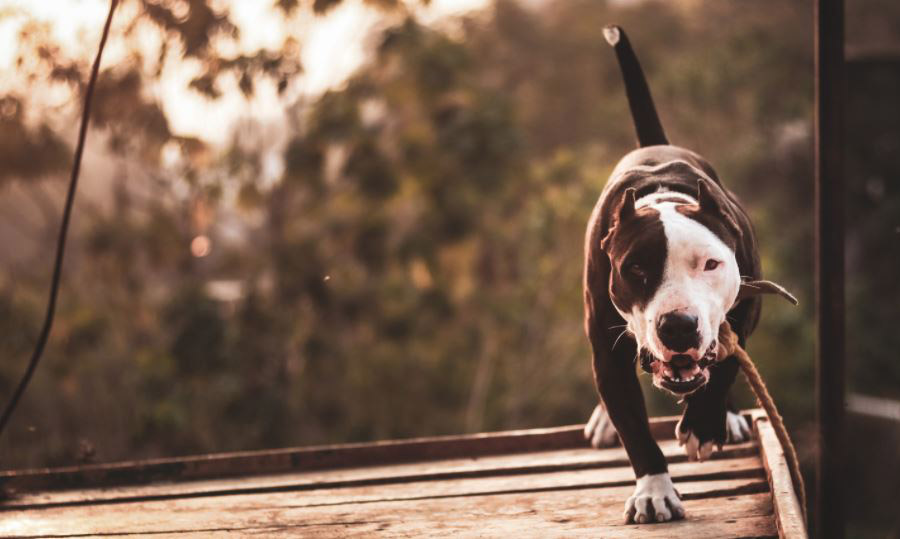
The American Pitbull Terrier before the 1980s was a dog that was a loyal family pet and a good all-around farm dog. It is true, that around the late 1800s the breed was used in many blood sports as their name suggests. It’s important to note that many other breeds of today were also used in blood sports of the time. However, APBT, Bulldogs, and Bull and Terrier breeds in the early and middle of the 1900s were rarely used to perform their original function.
To quote Delise ‘’ few Bulldogs, American Pitbull Terriers or Bull Terriers were expected to perform the original function associated with the breed. In the late 19th century most of the Bulldogs, Bull Terriers, and American Pitbull Terriers were not used for bull-baiting or dogfighting, but were used to assist and accompany their masters in the daily tasks of living.’’
There are many photographs of portraits of people, kids, middle class, aristocratic, black and white families with their pitbull-type dogs. These dogs look healthy and aren’t showing any signs of dogfighting, such as facial scars, torn ears, ripped lips, etc.
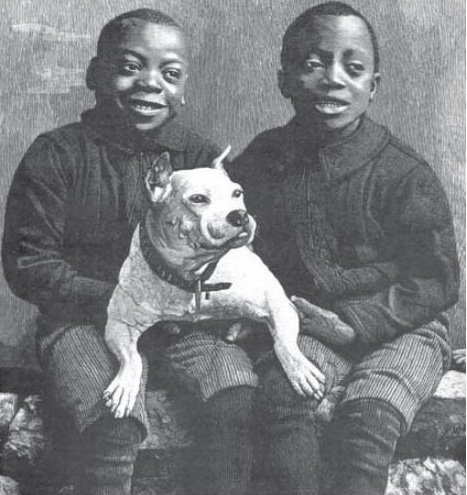
Pitbulls were the first breed of dog to star in several short silent films from Fatty Arbuckle from 1901 to 1932, acting as the comedic sidekick. They later became popular in children’s film and tv series Our Gang / Little Rascals during the 1920s and 1930s. It was rarely shown as a demining dog breed to be scared off (except by the bad guys in the stories) and was depicted as more of a wholesome family pet with a comedic nature.
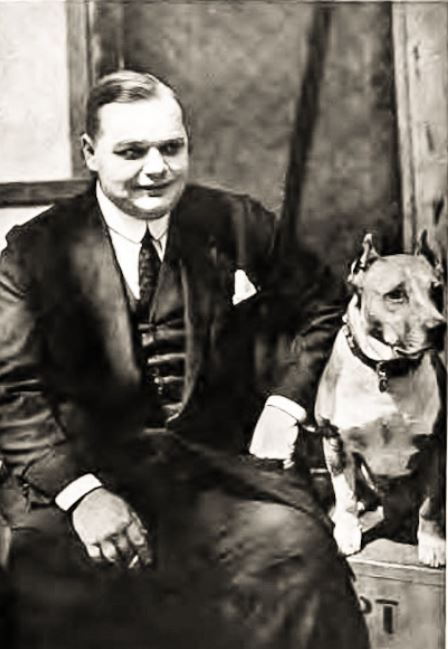
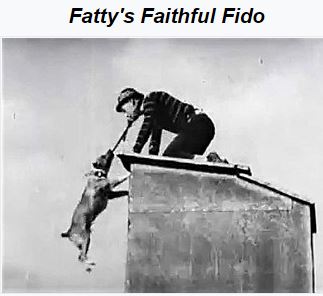
However, the popularity of this breed waned due to the rise of the German Shepherds’ stardom as mentioned earlier.
Karen Delise States that ‘’1966–1975, there is only one documented case of a fatal dog attack in the United States by a dog which could even remotely be identified as a “Pitbull” i.e. American Pitbull Terrier, American Staffordshire Terrier, Staffordshire Bull Terrier, Bull Terrier, American Bulldog, English Bulldog or any dog resembling a “Pitbull” or “Bulldog”
Delise outlines that In the mid of 1970’s the media were covering police raiding of gangs across America. Such gangs were involved in dogfighting operations, guns, drugs, and gambling. Reporting of the dogs being Pitbulls and also having aggression issues which resulted in the dogs being put down. This reporting was the start of media attention that started the cycle of wannabe gangsters wanting a dog to protect, impress, intimidate and guard.
This breed was getting media attention which became the ‘dog of choice’ for people seeking such intimidating purposes. Often these people were people that lived tough, on the streets, in crime and drugs, and are not the sort of people that would best look after any dog.
By 1982 the media sensationalism had taken root with wild claims about the breed and its menacing nature. In 1986 Pitbulls were a household name and a hot topic due to media sensationalism, In 1987 many big-name magazines and newspapers were competing for readers’ dollars and ran articles all describing the menacing behaviour of the pitbull.
- 1987, Rolling Stone magazine “A Boy and His Dog in Hell.’’
- 1987 Sports Illustrated ‘’Beware of this Dog’’
- 1987 Time Magazine ‘’Time Bomb on Legs’’
- 1987 People Weekly ‘’An Instinct for the Kill.’’
This only fueled the problem further with society now believing that these dogs are super predators and people looking for the ultimate guard or status dog continued to buy and sell these dogs. The mass increase of Pitbulls and pitbull owners that would mistreat and neglect their dogs, resulted in a large rise in dog attacks across the country.
By the 1990s and 2000s, The breed had replaced Dobermans in the minds of society as being the dog of fear and intimidation. Pitbulls were the new status dog for street gangs emulating what they had seen from the media and what was being reinforced by hard rockers and rappers.
- 1998 Korn Poster featuring two Pitbulls as part of the band group poster and also a Pitbull as part of ‘Got The Life’ video clip.
- By the end of 1999, Snoop Dogg released No Limit Top Dogg featuring three Pitbulls with him on the cover of his new album.
- 2003 saw DMX release Grand Champ featured a heavily changed APBT and then again with Year Of The Dog Again featuring APBT showing aggression in a dark alley
- 2003 saw Missy Elliott This Is Not A Test featuring Pitbulls on the cover in front of an army Hummer.
By the 2000s Pitbulls were now represented less to incite fear and intimidation and had become very much ingrained in the Los Angeles aesthetic as a status dog. This led to another mass increase of Pitbulls throughout America and the world. As the LA Aesthetic was popular in many parts of the globe which include Australia, Japan, and Europe.
Such a mass increase in ownership of Pitbulls led a larger rise in dog attacks which dominated the dog attack headlines in the media. Due to the dogs hyped reputation, many counties, governments, airlines, city jurisdictions banned the breeds outright which most are still effective today. Breed Specific Legislation (BSL) over the last 20 years has fueled a debate by expert and advocates of dog breeds, which in turn has slowly educated the general public.
Advocates for the breeds such as Cesar Millian, Jas Leverette, BadRap Organisation, Pitbull Advocates Of America, are all changing perceptions of this overpopulated breed without shying away from the problem that in the USA pitbulls are over-represented in dog shelters and dog bite statistics.
Pitbull owners have formed online communities and have signed petitions. Such statements like ‘Punish the Deed not the breed’, ‘End BSL’, ‘Ban bad owners, not the breeds’ are becoming noticed. Media outlets have even run stories about how the breeds are being unfairly judged by governments across the world as countless dogs are being put to sleep based on the way they look alone and not the result of an attack or dog bites.
Positive mainstream media is changing people’s perception of the breed as they are being educated about the breed and society’s issues of overpopulation with the breed. This is creating a shift in awareness which has been seen for the past 10 years.
Now in the age of the internet with ‘BS checking’ with google at your fingertips, I wonder how much influence the media will have in terms of shaping people’s stereotypical perceptions of a certain breed.
As we embark on a new decade, Will the Pitbulls in the 2020s still be public enemy number one?
More awareness is needed to change laws to remove breed-specific legislation. Due to the ban of the American Pit Bull Terrier in many countries such as the UK and Australia other breeds are starting to take this number one position. Such breeds include American bulldog, Staffadshire Bull Terrier and more noticably the Cane Corso.
Are Cane Corsos Dangerous?
The Cane Corso is a breed that is already starting to make headline news especially in the UK for an increase in dog attacks, dogs found mistreated or abused and have been associated with a part of organized crime in the past few years.
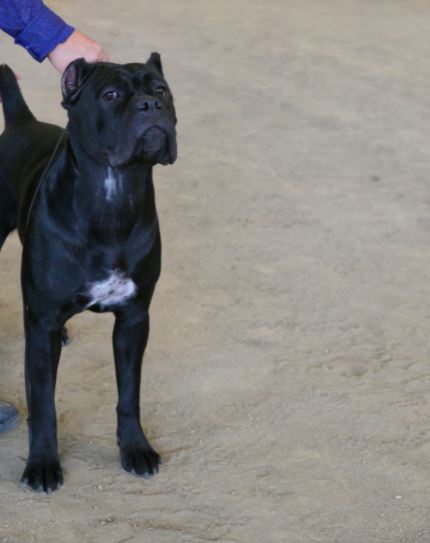
In the UK in 2021 owners of Cane Corso puppies were held up at gunpoint and knifepoint on two separate unrelated occasions and their puppies stolen.
Cane Corso’s popularity according to the American Kennel Club has jumped every year in ownership. In 2013 it was the 50th most popular breed, however, it has increased year after year and is now at the 25th most popular in 2020. The dog has gained mass popularity in central Europe and is one of the most googled breeds in the past 5 years.
Even Hollywood is seeing this as a trend and they have been featured in the children’s 2018 film, Show Dogs in which the Cane Corso dog was used as the dog villain to accompany the thieves in the movie.
Could the Cane Corso be the next breed subject to media sensationalism to overtake the Pitbull?
Guard Dogs
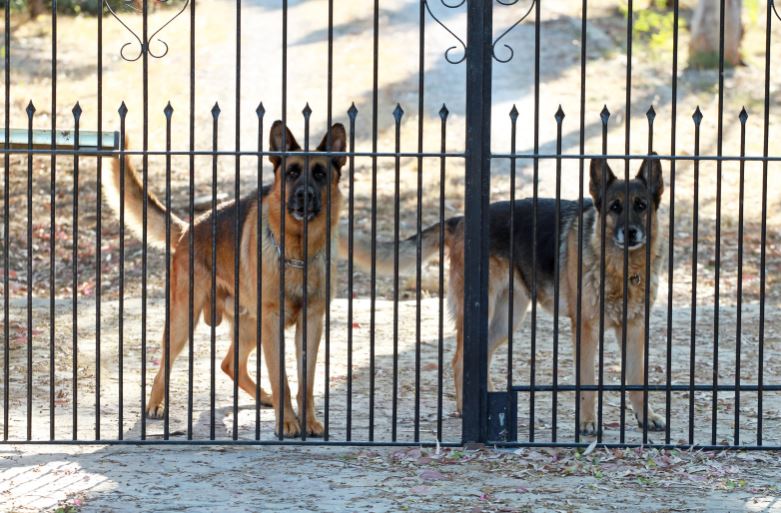
Despite the breed, guard dogs historically were chosen to be anti-social animals that would be wary and aggressive of strangers. Often these dogs would be chained or caged during the day and let loose at night. These dogs didn’t have positive social connections with people and would also only be allowed to roam the areas they protected, rarely exploring their neighbourhood.
Often without a positive leader or handler, these dogs would fight for the alpha position and often be beaten or encouraged to fight back from an attacking human.
Its important to note, that modern protection guard dogs today are highly trained dogs, trained by professionals and are taught to control their behaviours based on their handler’s commands. These protection dogs are totally different to the dogs that have been used as guard dogs historically which are dogs that have been left in a yard or chained.
A modern protection dog is very social with people and often trained in family settings. They are taught to recognize dangerous behaviours. For example, if someone looks dangerous in a stereotypically way like wearing a hoodie, intimidating size, dressed in black in a dark ally. The dog won’t attack unless this person does something dangerous that threatens their handler.
In Conclusion
Over the past 200 years, it is clear that it is not the breed at fault but the people who control them who are the perpetrators. The negative stereotypical ideas portrayed by the media on a particular breed is unjust and unfair which results in misuse, neglect, and in turn overpopulation and higher dog attacks. I hope that the rise in popularity of the Cane Corso doesn’t result in this breed becoming the next breed subjected to vilification.
Understanding our social issues in regards to dogs chosen for intimidation and educating such owners on positive training and care of their dogs will promote good dog owners who will learn to love and respect their dogs.
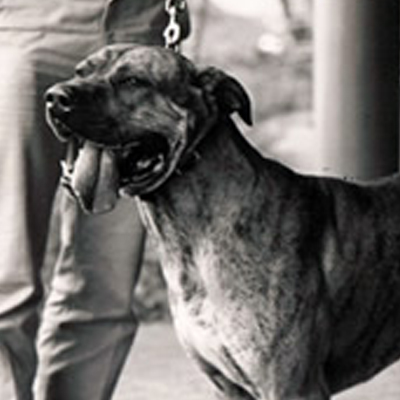
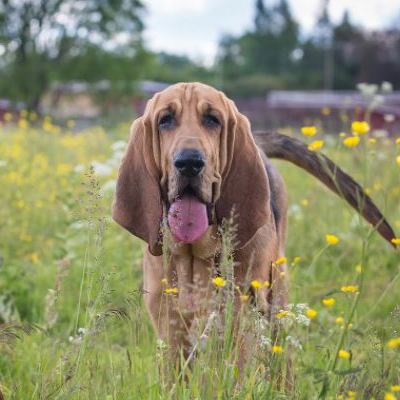
In today’s day and age, I hope that society can fact-check information about sensationalist claims we read, see or hear and that we can recognise tabloid reporting. Overall society is more educated thanks to the internet and we question more what we have been told.
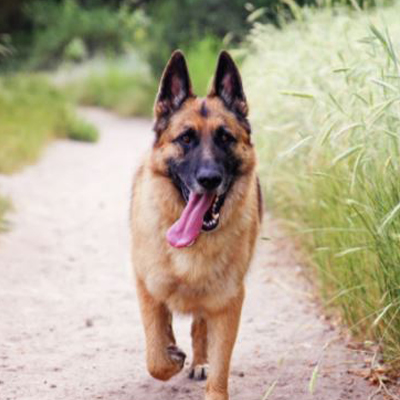
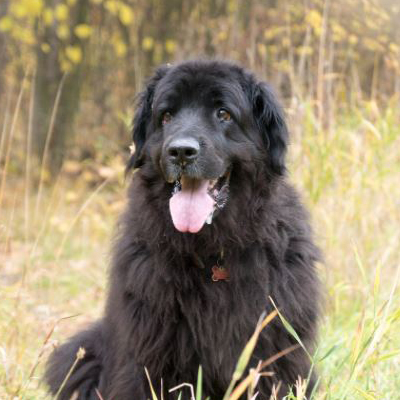
As members of society, we can push governments and policymakers to tackle the real issues with overpopulation, abused and abanded dogs in our cities and not single out one breed.
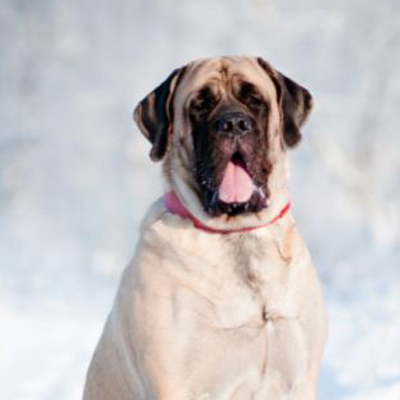
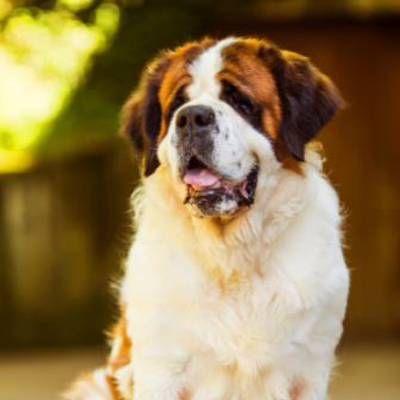
Banning breeds does not lower dog bite statistics. If you eradicate one breed, another breed will be the focus of dog bites and attacks. By banning breeds you aren’t dealing with the real issue.
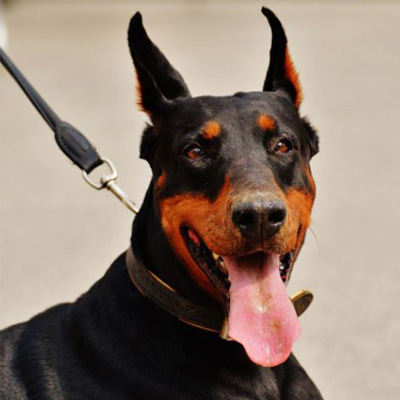
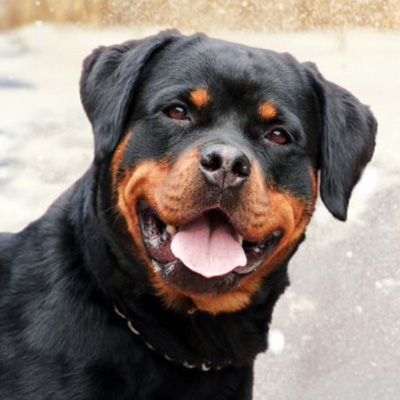
Awareness and education for the greater society on how to look after all dogs are already being taught by many TV and youtube dog behaviourists which is a good sign promoting positive dog ownership. This will reduce the dog bite statistics and also reduce the sensationalist media reporting of ‘dog bites man’ stories.
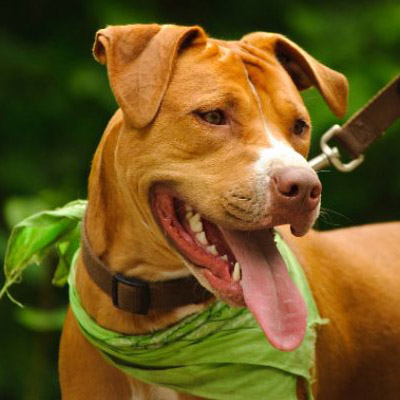
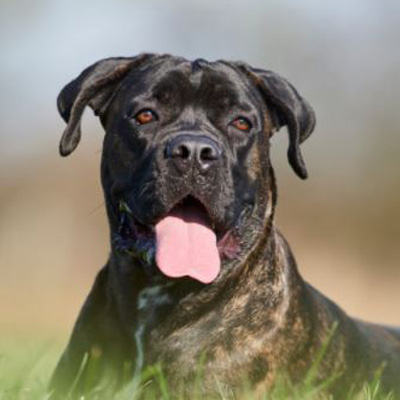
I hope you have enjoyed reading about the history of Dangerous dogs as much as I have had researching it
Click here if you are interested in the films surveyed for each breed.
